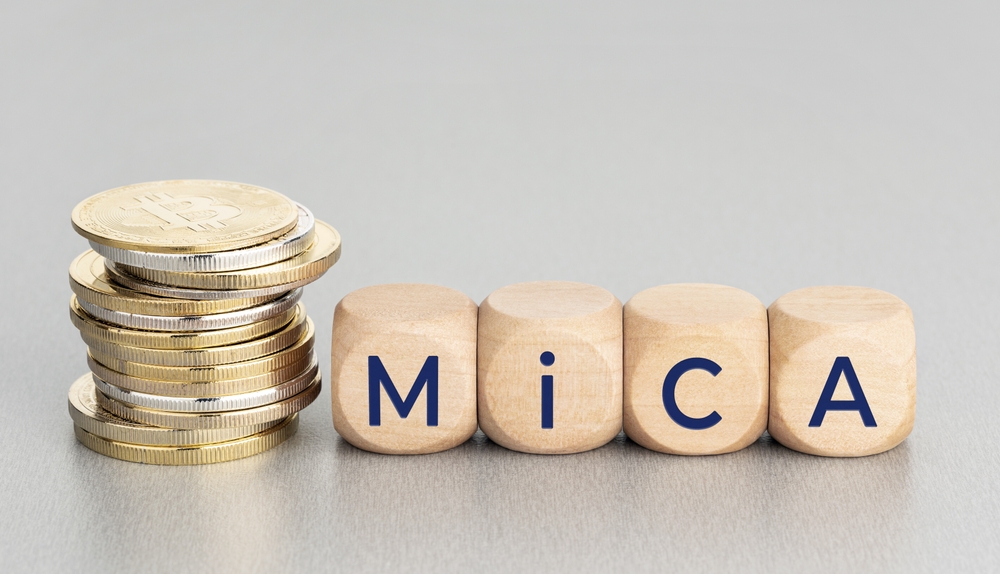Legal experts are critical of the €200 million daily cap that Markets in Crypto Assets (MiCA) legislation imposes on the stablecoins, including Tether (USDT) and Circle’ USD Coin (USDC). Imposing the daily limit could stifle crypto adoption across various European Union (EU) markets.
MiCA Set to Limit Private Stablecoins Usage in EU
The signing of the MiCA into law during the May 31 event drew praise as providing the first template for a regulatory framework on cryptos. The positive profile of the legislation is eroding first among critics pointing out the controversial clauses.
The critics allege that the introduction of €200 million, translating to a $219 million limit on daily transactions, will hinder the adoption of private stablecoins. Chander Agnihotri from the Clyde and Co law firm indicates that imposing the daily transaction cap would stifle the utilization of USDT and USDC.
In support of the legal director, Rachel Cropper-Mawer, who serves as a partner in the Clyde and Co firm, petitions the regulators to revisit the limits on the daily transactions. Failure to amend the controversial clause could make large stablecoins transactions impossible to realize.
Stablecoins mirror fiat currency pricing. They often peg the unit value to the US dollar. Their introduction sought to resolve the price volatility witnessed among the cryptocurrencies, including Bitcoin (BTC), Ethereum (ETH), and Litecoin (LTC).
Reconsider Stablecoins Regulation
The daily cap imposed on the stablecoins transactions constitutes a part of regulatory scrutiny on the segment following the sudden May 2022 collapse of Terra. Agnihotri admits that the algorithmic stablecoin TerraUSD (UST) collapse and USDC depegging in early 2023 following the Silicon Valley Bank implosion justifies the laser-focus portrayed by regulators towards privately issued stablecoins.
Agnihotri observes that regulators are concerned that stablecoins have stronger links to the conventional financial system through their reserves system. The regulators argue that failure in the dominant stablecoins could spell doom for the traditional financial system.
Cropper-Mawer contends that the €200 million cap does not translate to a total ban on the stablecoins. The legal experts argue that the issuers would need to cease further issuance whenever the threshold is exceeded. Collaboration with the regulators would facilitate bringing the transactions within the cap.
CBDC to Benefit From Stablecoin Transaction Cap
Cropper-Mawer considers that private stablecoins are becoming a preferred mode of settling payments. The cap would likely stifle the utilization of larger stablecoins. This possibility could prompt the legislators to revisit the issue.
Cropper-Mawer argues that failure by the regulators to revisit the provisions enshrined under the MiCA would erode the use of private stablecoins. The cap could sensibly favor the central bank’s digital currencies (CBDCs), triggering rapid usage.
Agnihotri ruled out that the MiCA lawmakers overlooked that the current provision would negatively affect the privately issued stablecoins. She noted that the possibility of private stablecoins having unfettered usage in other jurisdictions could hinder the EU’s crypto market.
Beyond the controversy cited by the advocates for private stablecoins, Agnihotri noted that such amounted to normal criticism. The levels are within the expected given its wide-ranging and expansive scope.
Agnihotri acknowledges that the majority of the feedback targeting MiCA is mainly positive. The MiCA is facilitative for startups and smaller entities to access the market. Besides, it targets fostering competition and innovation. She confesses that several provisions would benefit through subsequent adjustment, just as other legislation pieces.
Tether Perspective on MiCA
Tether’s chief technical executive Paolo Ardoino is optimistic about the active conversation to guide subsequent amendments to the MiCA. He considers amending the provisions necessary before the guidelines become effective for private stablecoin providers.
Ardoino supports discussions to harmonize the technical implementation standards critical to clarify several provisions. He is confident that the discussion would offer viable solutions to private stablecoins.
Ardoino considers the MiCA as providing the most comprehensive scope ever enacted to guide the crypto industry. He admitted that the daily trading limit would affect the private stablecoins though it only applies when the stablecoin is utilized to fulfill a certain purpose. The Tether’s tech executive was noncommittal on the MiCA’s impact on mitigating threats posed to the financial market.
Cropper-Mawer believes that MiCA’s success largely depends on the enforcement approach adopted at the member-state level. Also, its success could emerge from lawmakers’ decision
to sustain review, considering that the crypto industry portrays paced innovations.
MiCA’s provisions will become effective in 2024 following the legislation’s publication in the EU official journal.
